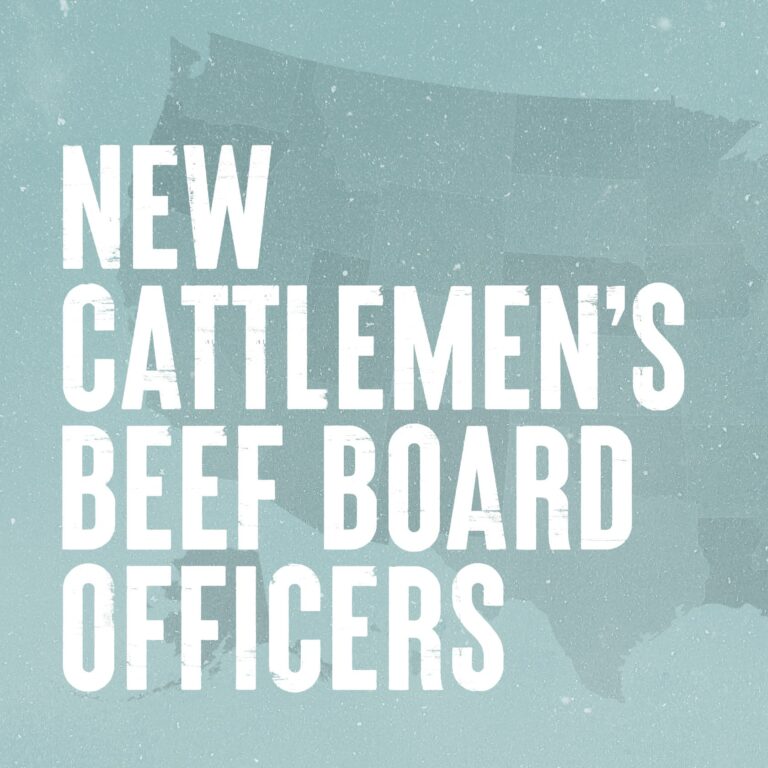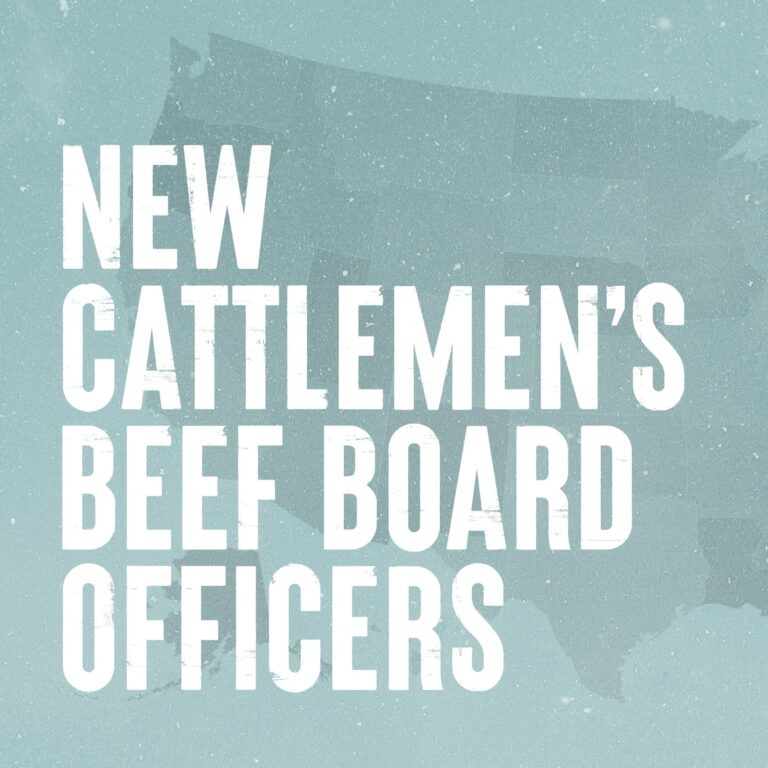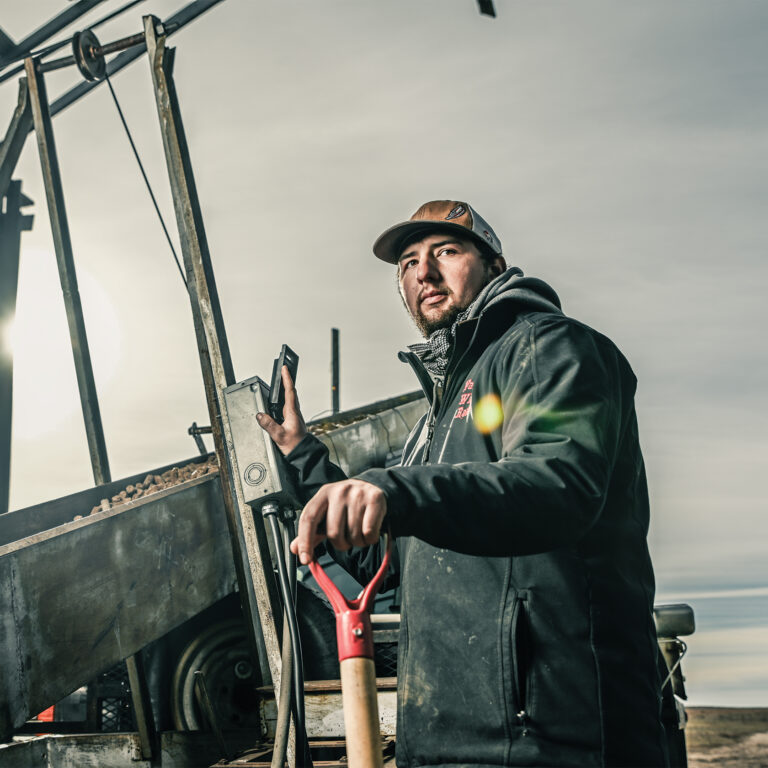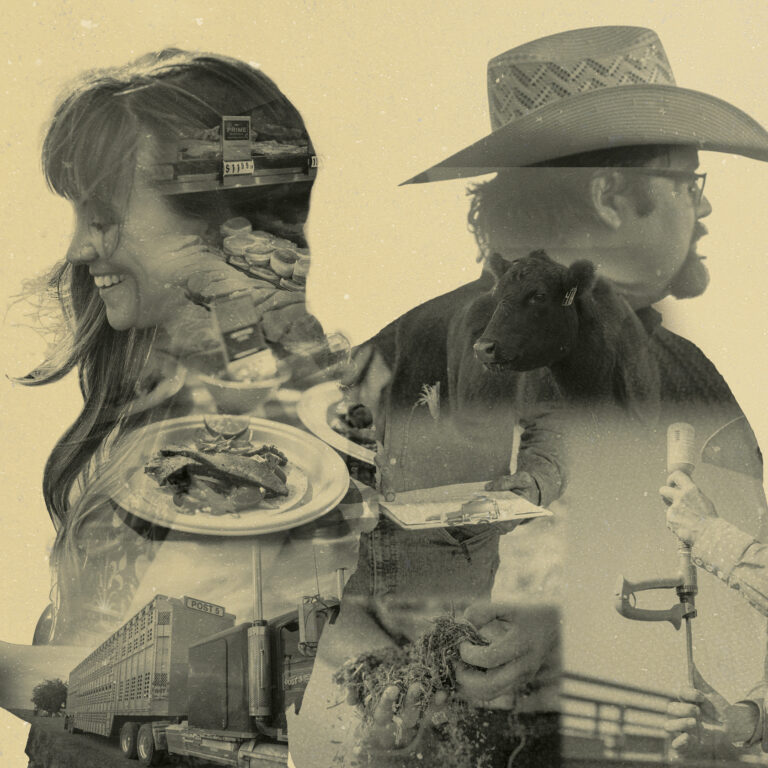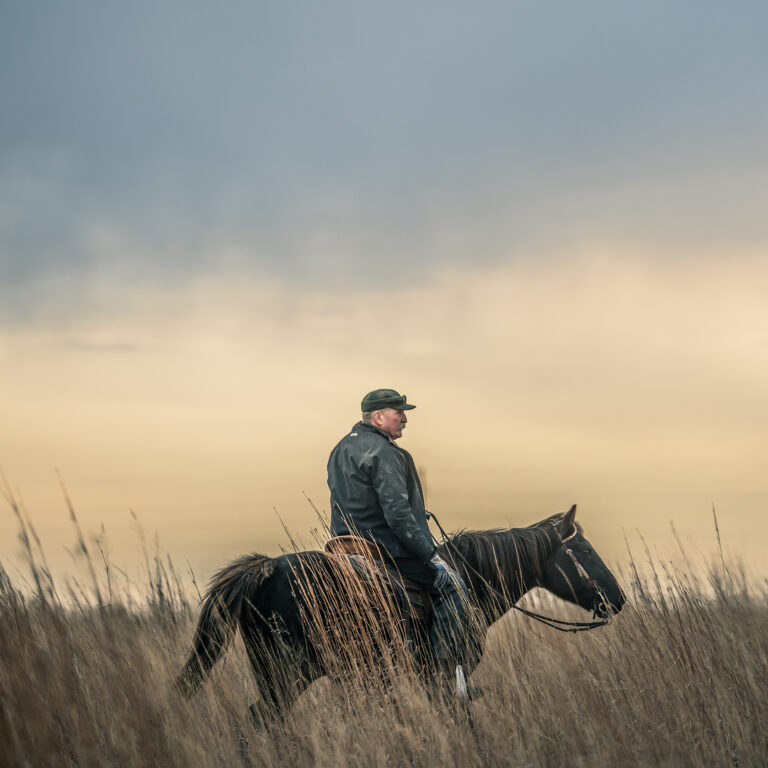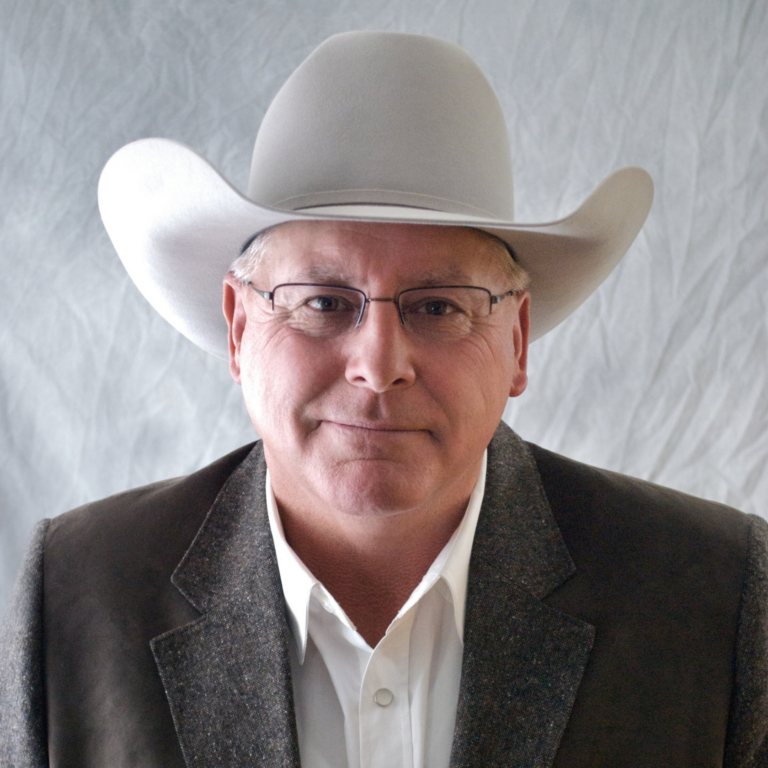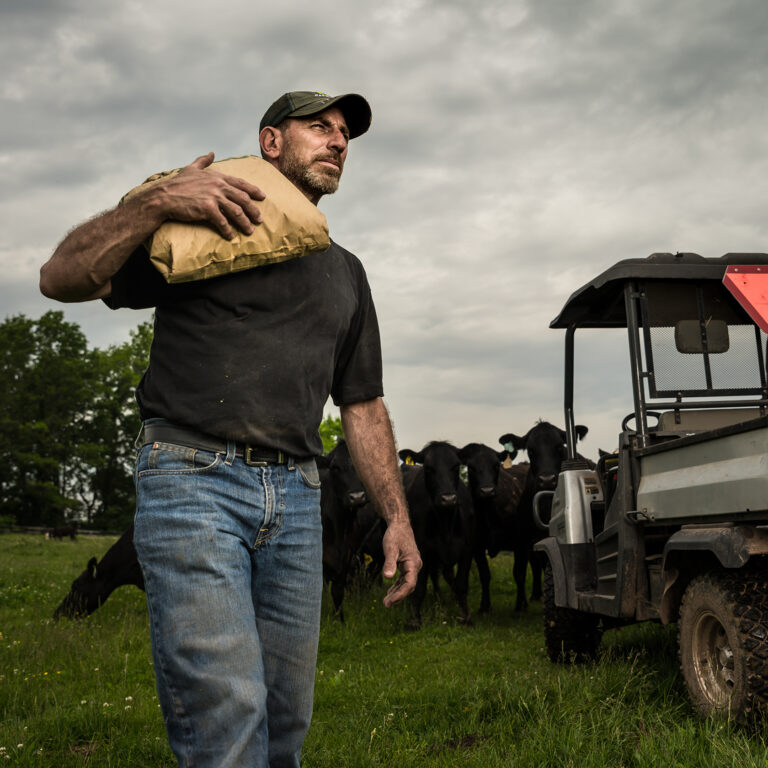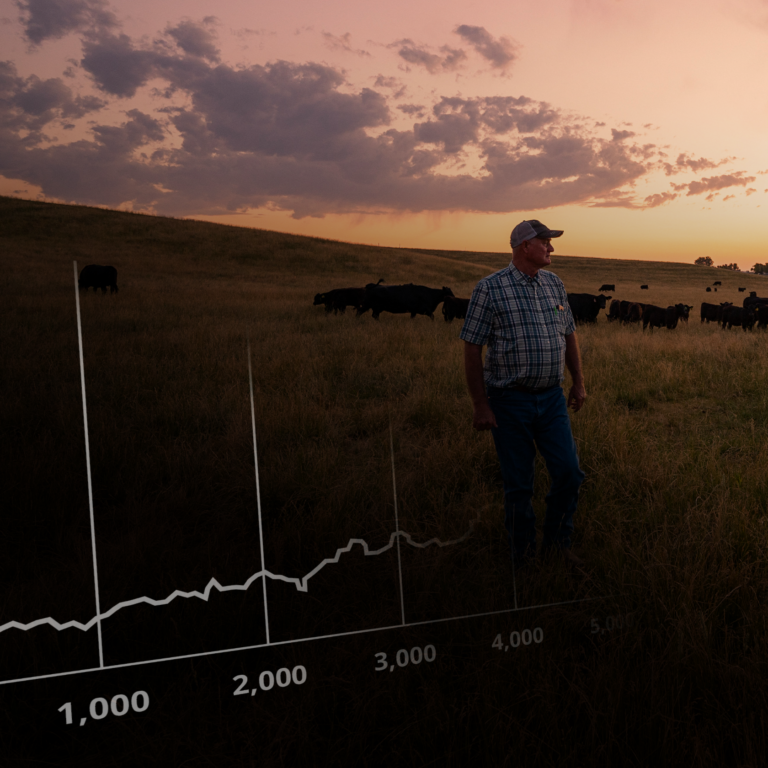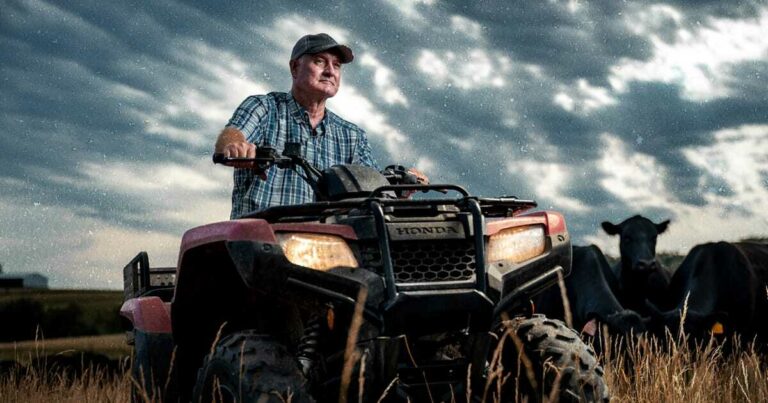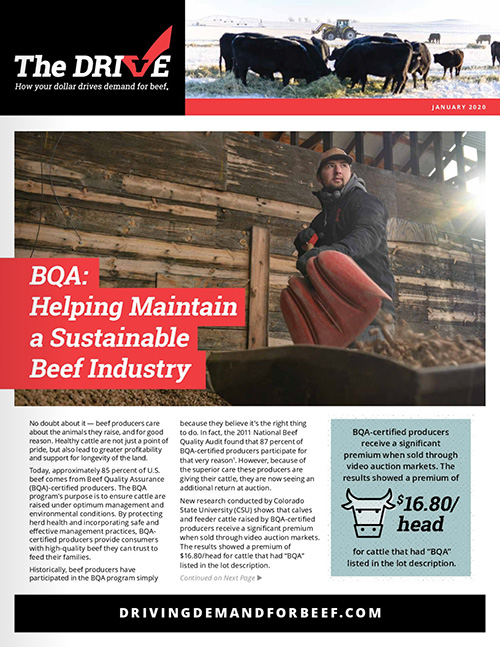Beef Checkoff Collections Throughout the Cattle Production Cycle
In 1985, the Beef Checkoff was established as part of the Farm Bill, assessing $1 per head on the sale of live domestic and imported cattle and a comparable assessment on imported beef and beef products. In a 1988 national referendum vote, 79 percent of producers voted to approve the mandatory program. For more than 35 years, the Beef Checkoff has worked to tell the story of everything beef offers, from producers’ commitment to their land and cattle, to beef’s superior taste and nutritional benefits.
“This is the producer’s money we’re handling, and it is a serious responsibility, in my opinion,” said Jo Ann Smith, the first Cattlemen’s Beef Board (CBB) chair. To this day, the CBB’s 99 volunteer producer and importer leaders from across the U.S. take that responsibility very earnestly, working to represent America’s cattle producers and promote beef’s image.
The Beef Checkoff is a complex program with many moving parts and people, and as industry stakeholders, it’s important to understand the fundamentals. Let’s dive into the core of it all — Beef Checkoff collections and how they work.
BACK TO THE BASICS
- As cattle move through the production cycle from birth to beef, the Beef Checkoff assessment is due each time cattle are sold. This is true for all cattle, regardless of the breed or age of cattle sold.
- The Beef Checkoff assessment is due whether cattle are sold through a livestock market, an order buyer or sold directly to another producer. The assessment is also due when cattle are harvested.
- The Beef Checkoff assessment is paid by the producer or withheld from the producer’s proceeds from the sale.In states where a brand inspection is required at the time of sale, the brand inspectors may collect the assessments from the seller on behalf of the Beef Checkoff program and remit the Beef Checkoff assessments.
- Nineteen states currently have an additional state-authorized Beef Checkoff assessment: Alabama, California, Georgia, Idaho, Illinois, Iowa, Kentucky, Michigan, New Mexico, North Carolina, North Dakota, Ohio, Oregon, South Carolina, Tennessee, Texas, Utah, Virginia and Washington.
WHO IS RESPONSIBLE FOR REMITTING THE BEEF CHECKOFF ASSESSMENT?
Generally, the Buyer is responsible for collecting the Beef Checkoff assessment from the Seller. However, both the Buyer and the Seller are responsible for seeing that the Beef Checkoff is collected and paid. The $1 Beef Checkoff is sent to the Qualified State Beef Council. $0.50 is invested in national Beef Checkoff programs and the remaining $0.50 is invested in state Beef Checkoff programs.
LIVESTOCK MARKET
When cattle are sold through a livestock market or video market, the Market collects and remits the Beef Checkoff assessment.
CATTLE DEALER/ORDER BUYER
When cattle are sold to a Cattle Dealer or Order Buyer, the Dealer/Order Buyer collects and remits the Beef Checkoff assessment.
ANOTHER PRODUCER
Both the Buyer and Seller are responsible for making sure that the Beef Checkoff assessment is collected and remitted. For clarity and consistency, we encourage the Seller to take on this compliance responsibility.
VEAL GROWER
When dairy calves are sold to a Veal Grower, both the Buyer and Seller are responsible for making sure that the Beef Checkoff assessment is collected and remitted. For clarity and consistency, we encourage the Seller to take on this compliance responsibility.
CATTLE SHOWS AND FAIRS
When producers sell their animals at fairs or cattle shows (4H/FFA shows, Purebred cattle shows, etc.), the Organization that runs the sale collects and remits the Beef Checkoff assessment.
FEEDLOT
When cattle are sold directly to a feedlot, the Feedlot collects and remits the Beef Checkoff assessment.
PACKING PLANT
When cattle are sold to a packing plant, the Packing Plant collects and remits the Beef Checkoff assessment.
DIRECT-TO-CONSUMER BEEF SALES
When producers market their cattle as beef, the Producer is responsible for remitting the Beef Checkoff assessment.
If you are a producer from one of these seven states — Alaska, Connecticut, Maine, Maryland, Massachusetts, New Hampshire, and Rhode Island — you will remit directly to the Cattlemen’s Beef Board.
Importers pay the dollar-per-head Beef Checkoff or the equivalent on imported cattle, beef, and beef products. These Beef Checkoff assessments are collected by U.S. Customs.
If you have any questions regarding who is responsible for remitting the Beef Checkoff assessment or how to remit payment, please contact your Qualified State Beef Council or contact the Cattlemen’s Beef Board at (303) 220-9890.
THE ROLE OF BRAND INSPECTORS
Many producers are familiar with brand inspection, with most of the Western U.S. requiring mandatory brand inspection on cattle every time an animal is sold. In most of the Western states, brand inspectors collect the Beef Checkoff assessment when cattle are sold or shipped out of state for sale, with the exception of when cattle are sold through a livestock market. In this case, the livestock market collects the assessment.
PAYING THE BEEF CHECKOFF ASSESSMENT
In most cases, the person or company paying the producer is responsible for collecting the Beef Checkoff assessment and remitting those assessments to their Qualified State Beef Council (QSBC) or to the Cattlemen’s Beef Board (CBB) in the seven states that do not have a QSBC. These “collecting persons” include livestock markets, video and online markets, cattle buyers, feedlots, packing plants, etc. However, in some cases, the producer is responsible for self-reporting cattle sales and Checkoff assessments. Some of the situations where a producer should self-report assessments include:
- Seedstock sales — if a producer is holding a production sale, the producer (or the sales management company assisting with the sale) is responsible for remitting Checkoff assessments on all cattle sold.
- Private-treaty sales — if a producer sells cattle directly to another producer, both the buyer and the seller are responsible for ensuring that the Checkoff assessment is paid to the QSBC (or to CBB). Dairy calf sales — if dairies sell calves directly off the farm, the Beef Checkoff assessment is due at the time of sale.
- Youth livestock sales — when youth exhibitors sell cattle through county, state, or national shows, the Beef Checkoff assessment is due. Typically, the organization managing the sale remits the assessments on behalf of all sale participants.
- Direct-to-consumer beef sales — when producers harvest cattle with the intent of selling the beef, the assessment is due at the time of harvest.
If you have sold cattle through any of these situations and need to report Beef Checkoff assessments, visit your QSBC (or the CBB’s) website to find a Private Treaty Sales Checkoff Investment Form.
Since all producers benefit from the Beef Checkoff’s demand-building activities, all are required to pay the Beef Checkoff assessment each time they sell cattle – no matter how the cattle are marketed. By pooling resources, beef producers and importers collectively fund essential marketing, research and educational initiatives to enhance beef’s value, expand market opportunities and foster consumer confidence. All stakeholders are encouraged to actively participate in QSBC and CBB meetings to ensure their voices are heard in Beef Checkoff programming.
The Beef Checkoff program was established as part of the 1985 Farm Bill. The checkoff assesses $1 per head on the sale of live domestic and imported cattle, in addition to a comparable assessment on imported beef and beef products. States may retain up to 50 cents on the dollar and forward the other 50 cents per head to the Cattlemen’s Beef Promotion and Research Board, which administers the national checkoff program, subject to USDA approval.



